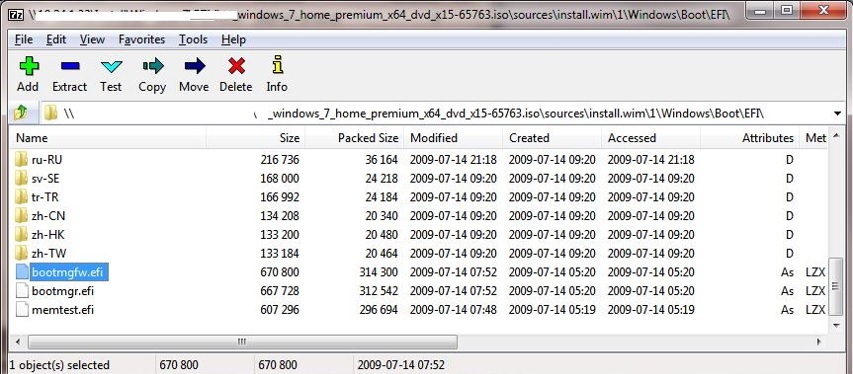
- Create bootable usb windows 7 ubuntu how to#
- Create bootable usb windows 7 ubuntu install#
- Create bootable usb windows 7 ubuntu driver#
- Create bootable usb windows 7 ubuntu windows 10#
- Create bootable usb windows 7 ubuntu code#
In addition to the Master Boot Record, you might also need to write an Extended Boot Record. Write an Extended Boot Record (EBR) to the USB Drive Partition Successful output should be: Windows 7 master boot record successfully written to /dev/sdX
Create bootable usb windows 7 ubuntu windows 10#
This same command also works if you are creating a bootable Windows 10 USB drive. Now that ms-sys is installed, you will use it to write a Windows 7 Master Boot Record to the USB drive. Write a Master Boot Record (MBR) to the USB Drive If you do not have /usr/local/bin in your shell’s environment path, run the following commands to temporarily add it: su.
Create bootable usb windows 7 ubuntu code#
Un-tar the source code and change into the source code directory: tar xvzf ms-sys-2.6.0.tar.gz
Create bootable usb windows 7 ubuntu install#
To install those packages on Ubuntu or Debian, run sudo apt-get install gcc make gettext.ĭownload the latest ms-sys source code from. To install those packages on Fedora, CentOS, or RHEL, run sudo yum install gcc make gettext. To compile the source code, install the following packages: gcc, make, and gettext (the package names should be the same on Fedora, CentOS, RHEL, Ubuntu, and Debian). You will need program ms-sys to write a Master Boot Record (MBR) to the USB drive. Then, format the partition as NTFS: sudo mkfs.ntfs -f /dev/sdX1 To install it on Ubuntu or Debian, run sudo apt-get install ntfs-3g. To install it on Fedora, CentOS, or RHEL, run sudo yum install ntfs-3g.

Create bootable usb windows 7 ubuntu driver#
You will need the Linux NTFS userspace driver installed. Format the New Partition on the USB Drive as NTFS Next, go to the section titled Format the New Partition on the USB Drive as NTFS.

Open the USB drive in fdisk: sudo fdisk /dev/sdX Everything done using parted is executed in real time.): (parted) mklabel msdos Once you are in the parted interactive menu, partition the USB drive with the following steps (Make sure you are using parted on the right device ID. Open the USB drive in parted: sudo parted /dev/sdX In either case, make sure you are making changes to the correct device. Changes made using fdisk can be reverted as long as those changes have not yet been written to the device. Use the command you are more familiar with.Ĭhanges made using parted cannot be reverted because they are executed in real time to the device. I am not, nor is anyone else, responsible for any potential data loss.Įither parted or fdisk can be used to partition the USB drive. Once you figure out the USB drive’s device ID, be sure to unmount it before continuing: sudo umount /dev/sdXĭisclaimer: The following steps will erase everything on your USB drive. On Ubuntu or Debian, run sudo tail -f /var/log/syslog. On Fedora, CentOS, or RHEL, run sudo tail -f /var/log/messages. If not, you can see what device ID is assigned to the USB drive by running df -h or mount or lsblk.Īdditionally, syslog can be monitored to find the device ID.

Most modern Linux distributions should automount the USB drive. Next, you need to figure out the device ID of the USB drive. Download Windows 10 Disc Image (ISO Files).

Download Windows 7 Disc Images (ISO Files).If you do not already have the Windows 7 or 10 ISO file, start by downloading one of them: The following post will walk you through the necessary steps to create a bootable Windows 7 or 10 USB drive from a modern Linux distribution. However, many of those guides have missing steps, involve using Windows, or use programs not readily available on modern Linux distributions.
Create bootable usb windows 7 ubuntu how to#
There are a lot of guides on the web describing how to create a bootable Windows 7 or 10 USB drive in Linux.


 0 kommentar(er)
0 kommentar(er)
